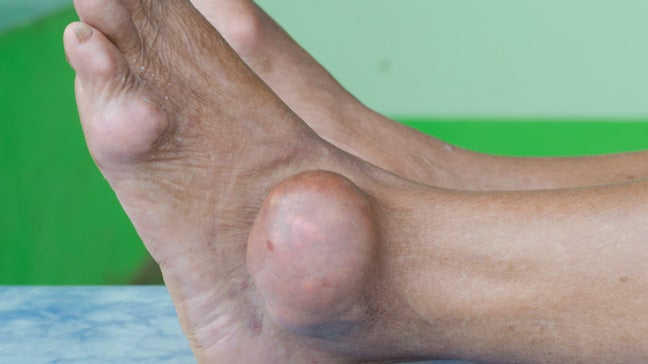General Health Tips & News
What Is Gout and How Is It Treated?
By M.M. (staff writer) , published on September 21, 2024

Medicine Telehealth Health Gout
What Is Gout and How Is It Treated?
Gout is a form of arthritis characterized by sudden, severe attacks of pain, swelling, redness, and tenderness in the joints. It most commonly affects the joint at the base of the big toe but can also occur in other joints, such as the ankles, knees, elbows, wrists, and fingers.
Understanding the causes, symptoms, and treatment options for gout is crucial for managing this condition effectively as it can lead to excessive pain, which can make a patient not get an everyday life if not treated.
Gout Causes
Gout is caused by an excess of uric acid in the blood, a condition known as hyperuricemia. Uric acid is a waste product formed from the breakdown of purines, substances found naturally in the body, and certain foods.
Usually, uric acid dissolves in the blood, passes through the kidneys, and is excreted in urine. However, if the body produces too much uric acid or the kidneys excrete too little, uric acid can build up and form sharp, needle-like urate crystals in a joint or surrounding tissue, causing pain and inflammation.
Gout Risk Factors
Some of the risk factors of gout include;
Diet: Eating purine-rich foods, such as red meat, shellfish, and sugary drinks, can increase uric acid levels.
Obesity: Excess body weight increases the production of uric acid and decreases the kidneys' ability to eliminate it.
Medical Conditions: Conditions like hypertension, diabetes, metabolic syndrome, and kidney disease are associated with an increased risk of gout.
Signs and Symptoms of Gout
Intense Joint Pain: Gout usually affects the large joint of the big toe, but it can occur in any joint. The pain is often most severe within the first 12 to 24 hours after it begins.
Lingering Discomfort: After the most severe pain subsides, some joint discomfort may last from a few days to a few weeks. Subsequent attacks are likely to last longer and affect more joints.
Inflammation and Redness: The affected joint or joints become swollen, tender, warm, and red.
Treatment of Gout
Gout can be treated through;
Medications
Medicines such as colchicine relieve pain immediately after gout kicks in. Corticosteroids, on the other hand, play a massive role in ensuring that inflammation is reduced.
Dietary Changes
People are advised to cease eating red meat and organic meat to reduce the risk of getting gout. People are also advised to avoid alcohol and increase low-fat dairy products in their meals.
Staying Hydrated
People need to stay hydrated by drinking water as it helps dilute the uric acid in the body and pass it out as waste.
In conclusion, it's crucial to know about gout and how it is treated to know the causes, signs, and symptoms and how to treat it.
Sources
1. https://my.clevelandclinic.org/health/diseases/4755-gout
2. https://www.mayoclinic.org/diseases-conditions/gout/diagnosis-treatment/drc-20372903
3. https://www.webmd.com/arthritis/understanding-gout-treatment
Find articles related to: Medicine Telehealth Health Gout
More articles about General Health Tips & News
Back to the Health Tips Index




